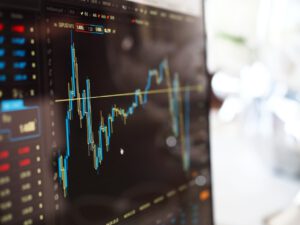By robbennett. Originally published at ValueWalk.

I often advance the claim that we are living in the last days of Buy-and-Hold, that the Buy-and-Hold house of cards will come tumbling down in the wake of the next price crash, which I expect to see in the next year or two or three. I have had people tell me that that is not so, that Buy-and-Hold has been around for a long time and there is no reason to believe that it will not be around for a long time to come.
Q4 2021 hedge fund letters, conferences and more
It is certainly so that the basic concept of sticking with a single stock allocation at all times has been around for as far back as there has been a stock market open for business. The evidence that sticking with the same stock allocation at all times is not a good idea has been around for 40 years now and today’s CAPE value tells us that Buy-and-Hold is more popular now than ever. So I don’t think we can say for certain what will happen.
Stock Prices Will Return To Fair-Value Levels
But I believe that the historical context has changed in ways that are going to make it difficult for Buy-and-Hold to retain its popularity through the next bear market. Stocks have come to play a bigger role in the average person’s life over the past 60 years than they did in earlier times, largely because we are a wealthier people and thus millions of middle-class people now begin looking forward to their retirement from an early age. The size of the price crash that we should be expecting if we believe that stock prices will once again return to fair-value levels would be a shock to the hopes of millions of people. When we are trying to survive the economic crisis that will follow from the huge economic contraction associated with such a massive loss of consumer buying power, a large percentage of the voting population will be asking hard questions as to what we did wrong to find ourselves in such circumstances.
And we have answers to those questions that we did not have available to us in earlier crashes. Stock prices have not been at low levels since the earlier 1980s. So there has never yet been a time when we had available to us Shiller’s Nobel-prize-winning research showing that irrational exuberance is a thing and when we saw the price that is paid for paying it no mind while it grew to a fearsome size. I believe that the combination of those two realities will deal a lethal blow to the Buy-and-Hold project.
The general acceptance of price crashes and the economic crises that follow from them is a scandal. The crises produced by bull markets are the economic equivalent of hurricanes. There is no reasonable person who would say that we should as a society make no efforts to mitigate the horrible destruction caused by hurricanes in the way that the Buy-and-Holders wave away concerns re excessive valuations with their reassurance that stock prices always sooner or later go back up again. Those sorts of claims sound good in the midst of a runaway bull market. I believe that they will be widely perceived as glib when we are all able to see with our own eyes the widespread damage that has been done by the promotion of the idea that market timing is not needed to bring down stock prices threatening to do great harm to us all.
The Dangers Of Buy-And-Hold
People do not appreciate that the general blindness to the dangers of Buy-and-Hold that we see today is just part of the irrational exuberance phenomenon. A CAPE level of 40 is evidence of exuberance. But that exuberance is irrational. The problem with irrational exuberance is that it is not lasting and its disappearance caused major setbacks for all those who once put their financial hopes in it. Support for price indifference is every bit as irrational as the insanely high prices themselves. People believe in Buy-and-Hold today not because the intellectual case for it is strong but because it appears to be delivering the goods. When the pretend money disappears, the elation felt over today’s high stock prices will be replaced by dejection that they were but a mirage.
I don’t expect to see that happen immediately following the crash. We had a price crash in 2008 and Buy-and-Hold is still going strong today. But I did see cracks in the foundation of belief appearing in the days following that crash. People who had never before questioned Buy-and-Hold began doing so. However, prices recovered in a few months time and confidence in the strategy was thereby restored. It takes time before people’s pain reaches a point where they will question a strategy that has come to mean a great deal to them. But, presuming that the next crash lasts much longer than the last one (which it will if the historical norms apply), people will eventually lose patience with the assurances that prices will go back up again and begin looking more seriously at the mountain of research showing that price indifference just does not make sense.
Rob’s bio is here.
Updated on
Sign up for ValueWalk’s free newsletter here.



